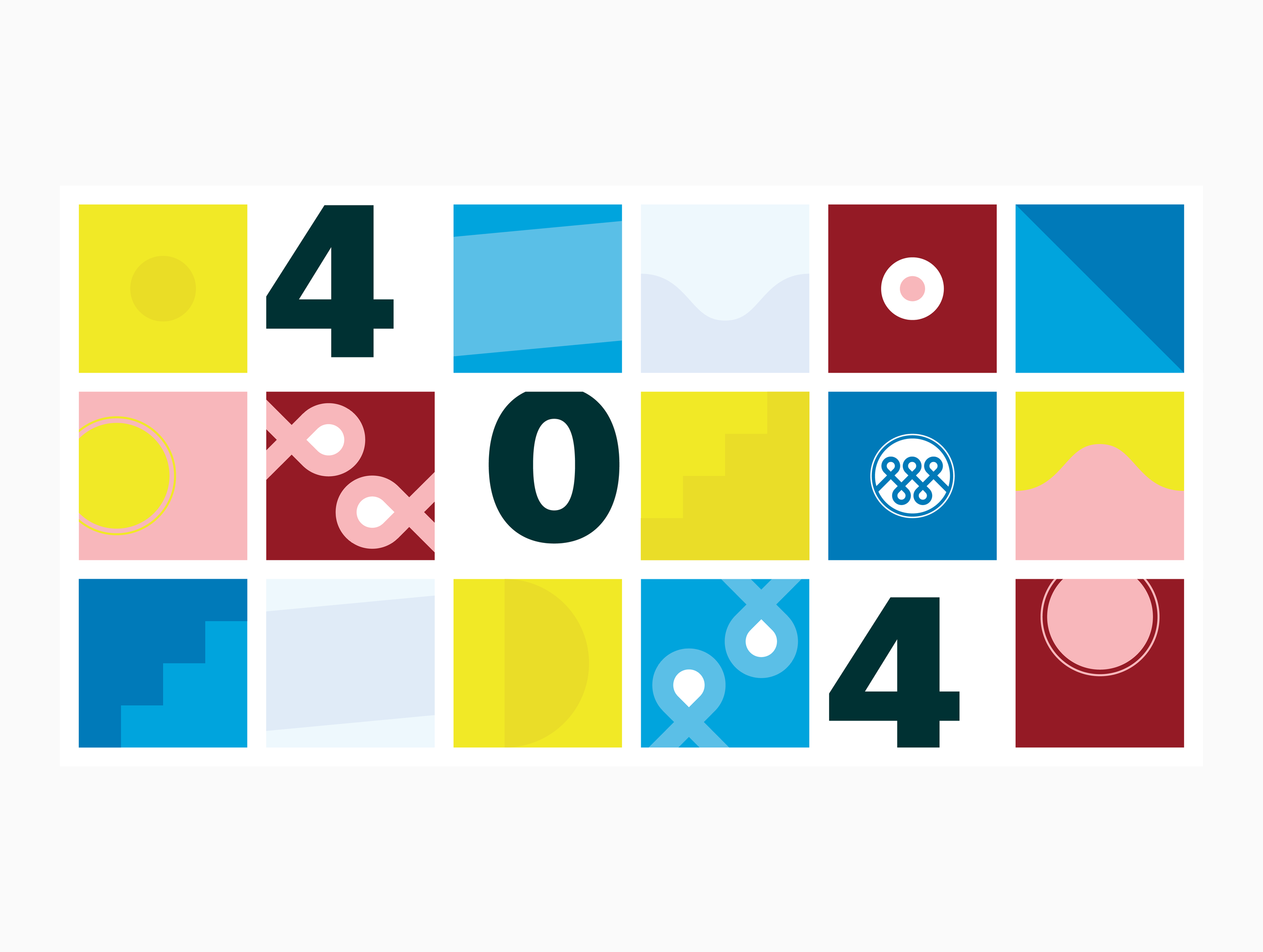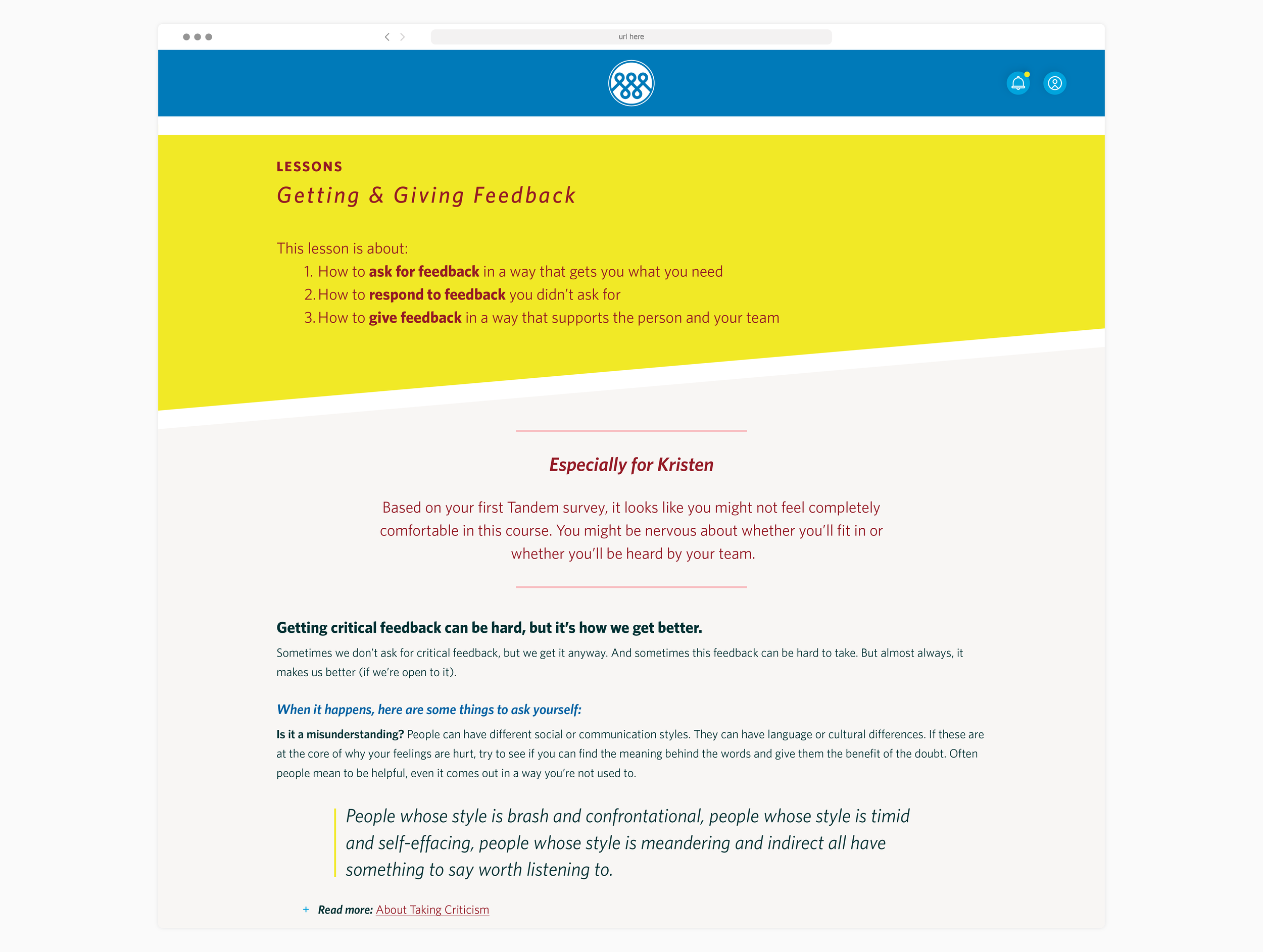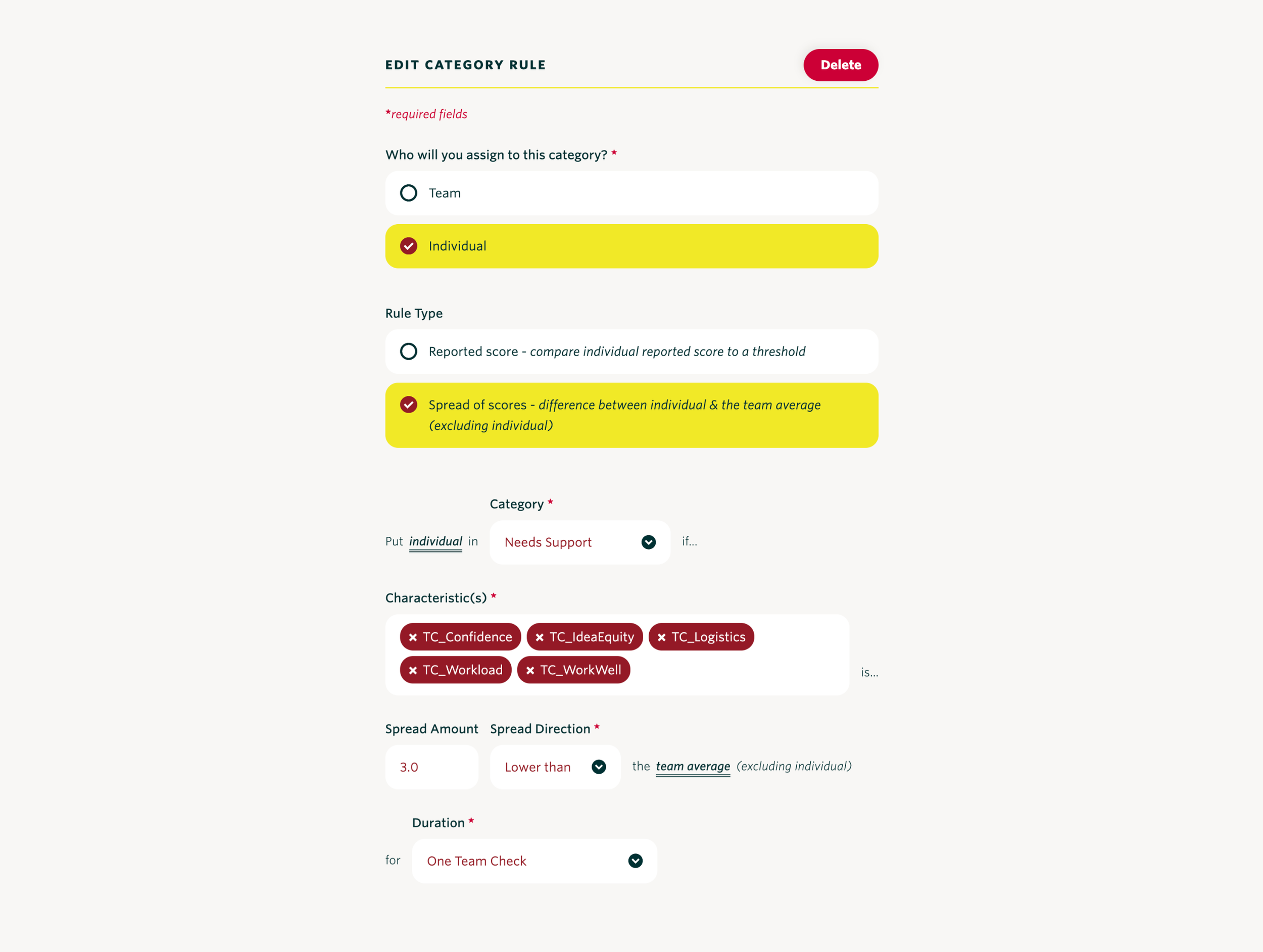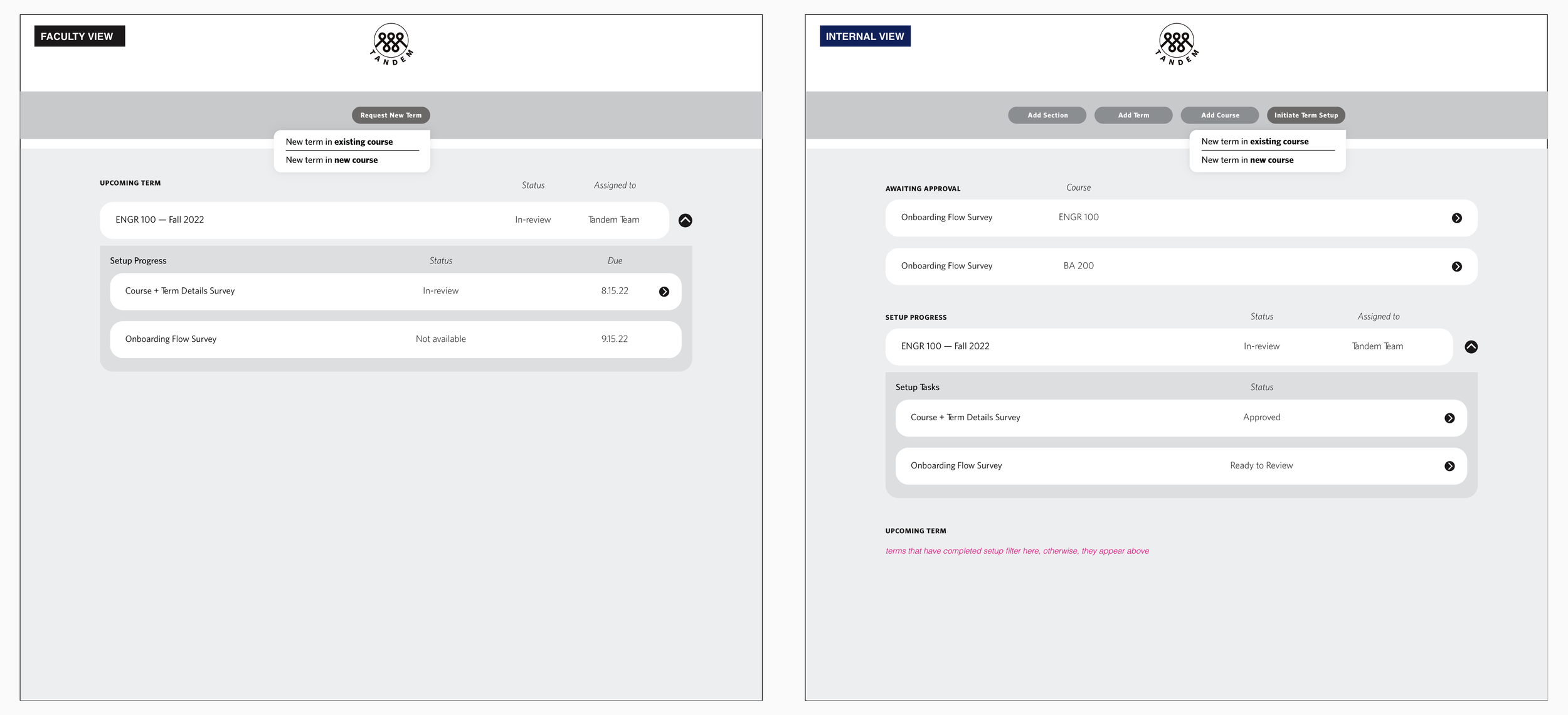Tandem
Tandem helps both instructors and teams manage teamwork. Students are offered a place to provide regular team feedback, receive insights, and engage with tailored lessons. Instructors have access to a detailed dashboard that informs them of teams or individuals in need of support, insights based on student input, and analytics of student engagement with content.
Role - Project Lead, UX Design Lead
The Problem
The greatest obstacle in developing Tandem has been scalability. The setup steps, which our team was responsible for, were so arduous that we were limited in how many courses we could realistically handle each term. This forced us to limit our adoption goals and diverted time and resources from feature development, which would have further enhanced Tandem's value. Another persistent challenge was the lack of autonomy that faculty had in running their Tandem instances. They often had to reach out to us for even minor adjustments, primarily because they were not involved in the process from the start.
Scalability is bottlenecked
Forced limits on tool adoption
Time diverted from feature development
Faculty lack autonomy
Goals
Streamline the setup task so that it’s simplistic enough that faculty can take ownership of the process, freeing our team from the responsibility and allowing the tool’s adoption goals to be met.
Analyzing the Current Process
As the primary users involved in setting up each Tandem instance, our team was deeply aware of the pain-points in the system. As a starting point, I analyzed and audited the steps we were taking to find the biggest points of friction:
Multiple steps made it extremely cumbersome, with lots of back and forth communication
The onboarding spreadsheet we leveraged was dense, confusing, and prone to inputs that conflicted with how Tandem functioned (*Often we needed to provide office hours to assist faculty in completing this spreadsheet as it required pre-existing knowledge about Tandem and how it works)
Returned spreadsheets often required follow-up questions for faculty
Everything in the spreadsheets needed to be copied and entered into Tandem itself, both time consuming and prone to inaccurate inputs
The input forms within Tandem were scattered and grouped by content type, not in a universal setup step
Tandem required content to be added at a management level and then wired at the instance level per course per term
Each Tandem instance required a corresponding project in the Michigan Tailoring System that required each assignment to be individually connected
Original launch / setup method (Google Sheets)
Manual Needs
4
separate tools
8
disparate forms
3
connections per content item
18+
content items
55+
manual tasks
Evaluating the Setup Requirements
Alongside identifying pain-points, I took a deep dive at the information we needed to gather from faculty in order for Tandem to run. A pattern became clear—all information could be grouped into two categories: the course details and content schedule for the term. As a team, we felt it was best to lean into these two categories and break the setup process into two tasks. The first task would gather information that faculty would know about their course at any point, such as the semester timing or course name. The second task would build their term schedule for Tandem deliverables. Initially, the plan for both was to deliver them as a linear survey.
Ideating on the Experience
Faculty–Internal User Flow
With these decisions made, I built out a proposed user flow aimed at solving the recognized issues and streaming-lining the process.
Wireframes
After working through the flow, I moved to the wireframing stage. It was important to think about where in Tandem these tasks would take place and how both faculty and our team would access whichever part of the task they were on.
Setup Survey Access
Survey Task 1: Course + Term Details
Survey Task 2: Content Selection / Schedule Building
Validating the Updates - R1
Informal Usability Testing — Survey Task 2
3
usability tests
1
faculty member
2
internal team members
Testing was conducted with one faculty member (target audience) and two team members (developer, behavioral scientist).
Findings:
The placement of Content Breaks (at beginning) felt weird, it feels more intuitive to build the regular schedule and then adjust the odd weeks (holidays, etc.)
Context explaining the content types and their purpose would be useful, especially for new users
Guidance around how short or long to have content open for would be helpful
The time picker Tandem leverages is unnecessary difficult for choosing appropriate release / due times
As you move from one content type to the next, the dates / timing of previously schedule items is unavailable, but all timing is related, requiring a bit of guesswork
Better safeguards are needed to ensure Tandem’s content requirements are met
Calendar summary at the end was valuable to see how the dates are setup and arranged
Additional team decisions:
Move away from a linear survey; provide a loose order, but don’t force it. Allow faculty to add the details in the order that feels the most intuitive to them.
Reduce choice overload in order to gain consistency and reduce user burden: everything opens / closes at the same time
High-Fidelity Designs
Schedule builds (left to right) as you complete the forms (above) in the order you prefer - Prototype
Validating the Updates - R2
Usability Test
The team implemented the above high-fidelity designs and used our Fall ‘22 term cycle as an opportunity for user testing with our faculty. We tested in all seven courses that needed to launch using their real-world schedule needs.
7
usability tests
11
faculty members
7
unique courses
Findings:
Course details:
Provide clearer direction on how the inputs will be used or presented within Tandem to alleviate uncertainty
The “select2” widget was difficult for many users. It went against users expectations for how it’d work, causing a time delay in the process
More context at the beginning of each page to explain what the step is for the “why” behind it
Indicating how long the process will take or how many steps there are would be helpful
Some hoped that returning courses would have the inputs pre-filled with their past submissions, to hurry the process
Term Planner:
“Tandem Access” isn’t clear who the access is for, students or faculty
Left sidebar is clear and a helpful indicator of where they are at in the process
Many courses wanted a bit more customization than we offered with this new tool; after testing a few courses, it became clear we went too far on limiting faculty choice and flexibility
General:
“this is actually kind of cool, it’s a lot easier than the spreadsheet”
The Solution
Current Designs
The version that we launched in Fall ‘22 was great as a stepping stone, teaching us a lot about what was needed along the way, but we recognized that a calendar version would be ideal for giving a full picture of the content schedule. The team jumped into rethinking the latest version and moving towards its next iteration. We managed to consolidate the process significantly, only requiring two pages in the second setup task. We ask faculty five simple questions and preload a schedule that they have complete control over customizing.
Outcomes
Through our dedication and hard work, we have successfully transformed our course launch from a spreadsheet to a fully functional and editable calendar, significantly enhancing the setup process. By implementing a straightforward and accessible onboarding process, we have broadened our reach and extended the tool to external university partners. Remarkably, a Tandem course can now be effortlessly launched within a mere 15 minutes, a drastic improvement compared to the previous time-consuming process that spanned several days and involved multiple team members. These concerted efforts have resulted in an 89% increase in the number of courses we undertake.
89%
increase in courses
15m
max setup time
1
tool
0
manual connections
2
simple surveys
Reflection + Next Steps
For next steps, our focus is on further enhancing the tool's flexibility by introducing new features for faculty, such as allowing customization of the student surveys. Additionally, we are committed to eliminating the remaining manual steps needed for launch, albeit few in number.
Reflecting on the work completed this past year, I have gained valuable insights. I have learned that rapid progress is achievable, and it is essential to not get attached to intermediate versions, recognizing them as stepping stones toward our long-term goals.
Brand Identity & System
Tandem uses a vibrant color scheme that is both bright and welcoming. Pastel blues and beiges complement the primary palette, reducing the intensity. Whitney, a humanist sans-serif digital typeface, is used for Tandem’s brand. Tandem employs a mix of rounded corners and sharp, angled edges to create a strong, sturdy, and approachable tool that you can rely on.






Student Features
The Tandem student view includes:
Surveys
Beginning of Term survey — gathers student data that enables us to tailor content
Team Check surveys — short, 5 question surveys regarding overall team health
Team Evaluations — an expanded version of the Team Check with in-depth questioning with peer and self evaluations
Team Check visualization — average input of each team member to let each student know how the team is doing
Lessons that are tailored to the student and delivered based on Team Check data, when it’s most impactful
Assignment history — completion tracking









Dashboard Features
Prior to the launch of a Tandem instance, the dashboard provides a setup guide that allows for a quick course launch, preloaded with surveys and student-tailored content. Tandem harnesses the power of the Michigan Tailoring System without requiring faculty to open the tool. Faculty can also use Tandem to form teams based on student data, leveraging default rules that aim to create inclusive teams.
After a course is launched, the dashboard provides faculty members with insights into students, teams, and the course as a whole. Tandem provides information on the health of teams and individuals, highlighting students or teams that require attention. Faculty can also keep track of assignment completion, adjust their course content schedule, or track student engagement with the tool.


















